Kao Builds a Plant Factory “Smart Garden Meguri” Using Captured and Purified CO2
Proprietary Processing of Cultivated Plants for Production of High-purity Botanical Extracts
The Material Science Research Laboratory of Kao Corporation has built the proprietary plant factory Smart Garden Meguri, which uses equipment able to capture and purify carbon dioxide (CO2) emitted from an incinerator plant owned by Saga City in Saga Prefecture. The Smart Garden Meguri is able to efficiently cultivate plants while decreasing environmental impacts from electricity and water consumption. Kao employs an end-to-end integrated process from plant cultivation to extraction of botanical extracts. Additionally, it has developed technology to control plant compounds, enabling it to obtain botanical extracts with high purity and efficacy.
Kao’s research findings are scheduled to be announced at the 89th Annual Meeting of the Society of Chemical Engineers, Japan (March 18–20, 2024) and the 2024 Annual Meeting of the Japan Society for Bioscience, Biotechnology, and Agrochemistry (March 24–27, 2024).
Video about this technology: Kao Plant factory cultivation & development of high purity extracts (youtube.com)
Background
Ingredients used in cosmetics today are expected to be naturally derived and offer advanced functionality. In addition, they also need to be sourced with consideration for the environment. Botanical extracts are natural ingredients with a range of anticipated skin care benefits and are used in a wide range of cosmetics for these reasons. In some cases, however, the plants are cultivated using water-intensive methods that raise concerns about water resource depletion. Therefore, it has become even more important to ensure that plants are cultivated and harvested with minimal environmental impact.
Plant factory Smart Garden Meguri that reduces environmental impacts and stimulates plant growth
Kao has built its new Smart Garden Meguri plant factory for cultivating Roman chamomile and rosemary with the concept of sustainability based on three types of circularity.
First, the Smart Garden Meguri reuses CO2 emitted from an incinerator plant in Saga City that has been captured and purified using carbon capture and utilization (CCU) technology. Carbon dioxide promotes photosynthesis in plants, and in Kao’s Smart Garden Meguri, supplying CO2 to plants has been confirmed to accelerate their growth by approximately 20%*1 .
The second type of circularity is the recycling of water used in hydroponic farming. The Smart Garden Meguri recycles and reuses the water used to cultivate the plants, resulting in a about 40% in water consumption compared with cultivating the plants in an open field*2 .
Third, the Smart Garden Meguri uses renewable energy. All of the electricity used here is generated from renewable geothermal and hydroelectric sources, reducing the Smart Garden Meguri’s CO2 emissions.
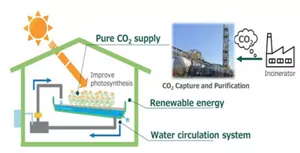
Figure 1. Schematic diagram of environmentally friendly cultivation in Kao’s unique Smart Garden Meguri
-
* 1 Announced at the 89th Annual Meeting of the Society of Chemical Engineers, Japan (March 18–20, 2024)
-
* 2 Water consumption in an open field cultivation is based on the following journal K. D. Giannoulis et al., Matricaria chamomilla L. (German chamomile) flower yield and essential oil affected by irrigation and nitrogen fertilization, Emirates Journal of Food and Agriculture. United Arab Emirates, 2020 32(5), 328–335 (2020). The amount of water consumption per kg of fresh flowers was calculated and compared to the amount of water used per kg of fresh flowers cultivated in Smart Garden Meguri. This information will be presented at the 89th Annual Meeting of the Society of Chemical Engineers, Japan (2024).
In addition to these systems, the environmental conditions needed to cultivate the plants, such as air conditioning and sunlight, are monitored around the clock in the Smart Garden Meguri. Advanced control of temperature, illuminance and other cultivating conditions is part of the established scheme to increase the amount of active ingredients in the plants and then harvest them when the amount of those ingredients is abundant. Hydroponic farming is not widely used for cultivating Roman chamomile and rosemary, but Kao’s Smart Garden Meguri has succeeded in mass-producing of these plants (Figure 2).
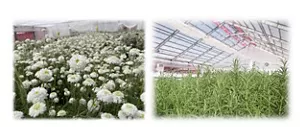
Figure 2. Cultivation of Roman chamomile (left) and rosemary (right) using Smart Garden Meguri
Development of botanical extracts with high purity and efficacy
Botanical extracts contain a wide variety of compounds based on the plant’s properties. Since many of these compounds are not anticipated to have skin care benefits, in some cases plants’ beneficial qualities have not been able to be fully utilized. Kao therefore studied processing technologies for extracting botanical extracts with the aim of increasing the active ingredients in the extracts while also reducing impurities to produce botanical extracts with high purity that deliver high efficacy.
Development of processing technology to increase the amount of active ingredients in botanical extracts
Kao studied how to increase the amount of polyphenols, a type of active ingredient, by controlling the function of enzymes contained in plants themselves. For Roman chamomile, Kao confirmed that stimulating enzyme function increases its polyphenol content, which is anticipated to deliver skin care benefits*3 (Figure 3).
For rosemary, enzymes act to begin breaking down polyphenols immediately after the plant is harvested. Therefore, Kao uses enzyme deactivation (blanching) process to maximize polyphenol extraction.
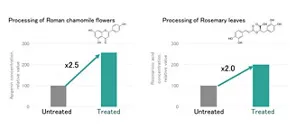
Figure 3. Enhancement of polyphenol amounts by utilizing enzymes
-
* 3 Joint announcement with Kyoto University scheduled at the 2024 Annual Meeting of the Japan Society for Bioscience, Biotechnology, and Agrochemistry (March 24–27, 2024)
The extracts also contain various impurities such as fructose and other sugars that can negatively affect the finished product’s properties. Kao has therefore developed proprietary processes to remove impurities while retaining the active ingredients. As a result, the amount of fructose in Roman chamomile extract has been reduced by 97% and rosemary extract by 99% (Figure 4).
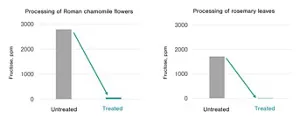
Figure 4. Fructose reducing by processing technology
Confirmation of the efficacy of highly purified botanical extracts
The extracts developed with this processing technology have been confirmed to offer a variety of benefits.
Roman chamomile extract from plants cultivated and processed in Kao’s Smart Garden Meguri
- Colorability: 48% improvement in transmittance compared to untreated extracts that are generally cultivated in open fields and not treated to reduce impurities*4 (Figure 5)
- Bacterial growth: The growth inhibition of coliform bacteria and Staphylococcus aureus was confirmed compared to untreated extracts that are generally cultivated in open fields and not treated to reduce impurities*5
- Collagen anti-glycation assay kit was used to confirm the inhibitory effect of collagen glycation reaction*6
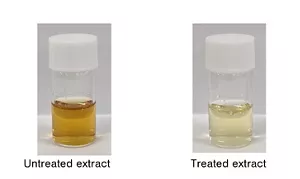
Figure 5. Extract with reduced coloration due to higher purity
Rosemary extract from plants cultivated and processed in Kao’s Smart Garden Meguri
- Colorability: 79% improvement in transmittance compared to untreated extracts that are generally cultivated in open fields and not treated to reduce impurities*4
- Bacterial growth: The growth inhibition of coliform bacteria and Staphylococcus aureus was confirmed compared to untreated extracts that are generally cultivated in open fields and not treated to reduce impurities*5
- Confirmed increased amount of filaggrin gene expression related to stratum corneum function, including skin barrier function and moisture retention*7
- Confirmed an improvement trend in barrier function in continuous use testing on human subjects in the comparison between high-purity botanical extract formulations and placebo formulations*8
-
* 4 Measured transmittance of extract stock solution (%; λ=550nm) before storage
-
* 5 Confirmed the incidence of coliform bacteria and Staphylococcus aureus under pH 7.0 conditions
-
* 6 After adding fructose and extract to collagen, the inhibition rate of AGEs formation, an end product of glycation, was checked by fluorescence (λex=370nm, λem=440nm)
-
* 7 Analyzed using the real-time PCR technique of the change in filaggrin gene expression after adding extract to cultured cells
-
* 8 Evaluated stratum corneum moisture content before and after half-face application of the high-purity extract formulation and a placebo formulation twice daily for 4 consecutive weeks in 32 normal-skinned female subjects
Summary
Kao has built the proprietary plant factory Smart Garden Meguri and established cultivation technology that enables improvements in plant yield and quality as well as processing technology to produce botanical extracts with high purity and efficacy. As a result, high-purity Roman chamomile extract and high-purity rosemary extract offer benefits such as reduction of coloration, inhibition of bacterial growth, inhibition of glycation reaction and improvement of the skin barrier.
The extracts made from plants cultivated and processed in the Smart Garden Meguri are being considered for application in Kao Group products aimed at beauty and health, and in the future will be sold as raw materials, mainly overseas.
About Kao
Kao creates high-value-added products and services that provide care and enrichment for the life of all people and the planet. Through its portfolio of over 20 leading brands such as Attack, Bioré, Goldwell, Jergens, John Frieda, Kanebo, Laurier, Merries, and Molton Brown, Kao is part of the everyday lives of people in Asia, Oceania, North America, and Europe. Combined with its chemical business, which contributes to a wide range of industries, Kao generates about 1,530 billion yen in annual sales. Kao employs about 34,300 people worldwide and has 137 years of history in innovation. Please visit the Kao Group website for updated information.
Media inquiries should be directed to:
Public Relations
Kao Corporation
